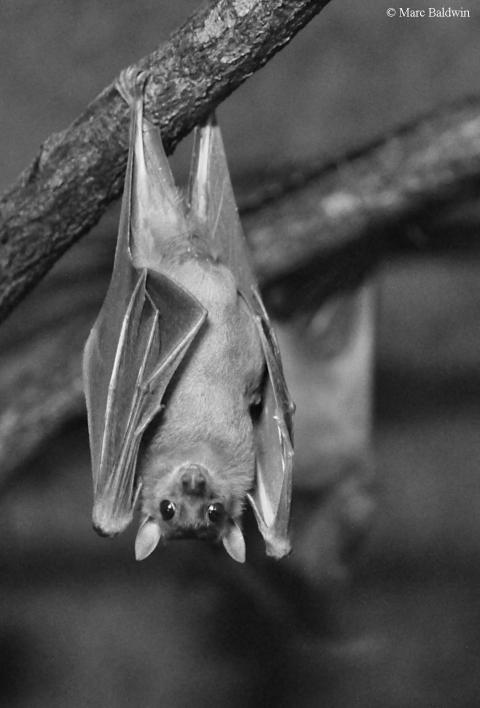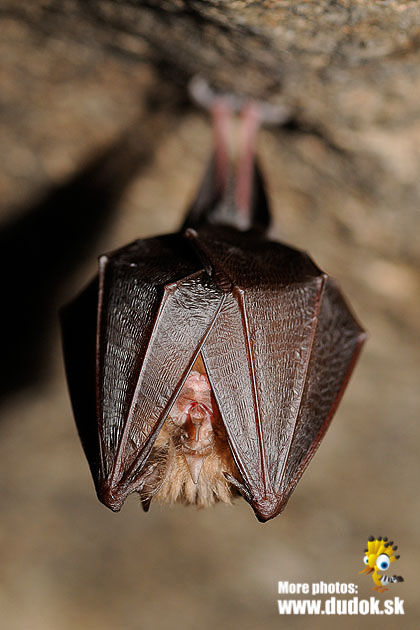Bats - Taxonomy

Contrary to some popular misconception, bats are not "flying rats". Indeed, bats are not even of the rodent order and are instead chiropterans. Globally, the order Chiroptera, from the Latin chiro meaning 'hand' and the Greek pteron for 'wing', is currently composed of 18 families, about 174 genera and more than 900 species. Chiropterans are subdivided into two main groups, called suborders: the Megachiroptera, which holds the Old World fruit bats, sometimes called "flying foxes"; and the Microchiroptera, which essentially contains any bat that isn't a fruit bat. There are some 164 species of fruit bat, grouped into 41 genera in a single family, the Pteropodidae. The Microchiroptera is the larger of the suborders, consisting of the remaining 17 families, 133 genera and somewhere in the region of 743 species. Of the microchiropterans, the most diverse family is probably the Phyllostomidae, or the New World leaf-nosed bats, with 49 genera, while the largest family is the Vespertilionidae (vesper or 'evening' bats), with an impressive 308 species divided into 34 genera.
The taxonomy of bats is far from universally agreed and there are several different proposed taxonomies. In more recent years, the advancement of molecular sequencing techniques has provided a clearer picture on how different bat species are related, but there's more to be done. For the purposes of this article, I have opted to follow the scheme presented by David Macdonald in his 2001 revision of The New Encyclopedia of Mammals.
Up until the late 1960s and early 1970s the majority of bat cladists considered that bats formed a monophyletic group (i.e. they are each other's closest relatives) and this idea meant that powered flight only evolved once in mammals. Studies on the brains of fruit bats in the mid-1980s led by John Pettigrew at the University of Queensland's Neuroscience Lab to suggest, however, that the mega- and microchiroptera evolved independently from two separate groups of non-flying mammals -- this idea is often referred to as the diphyly hypothesis.
Pettigrew found that megabats had very advanced neural pathways between the eyes and brain, more akin to that seen in primates. If Pettigrew's correct and bats are truly diphyletic (i.e. they don't form a single group that evolved from a common ancestor) then flight must have evolved twice; once in the megachrioptera (megabats) and then again in the microchiroptera (microbats). As appealing as Pettigrew's hypothesis is, based purely on the available evidence it is supported by only a handful of studies (including one looking at the nervous system and another looking at penis morphology), while at least 30 studies support the idea that are a monophyletic group. So, although the jury is still out on the monophyly/diphyly debate, the consensus is that bats form a single group that evolved from a single, non-flying, common ancestor.

The UK is home to 16 species of bat and, in their book A Field Guide to British Bats, Frank Greenaway and Adam Hutson list seven species that are vagrants. Only 12 years ago, there was a seventeenth species on the British bat fauna list: the mouse-eared bat (Myotis myotis). Two years' worth of bat censuses failed to find a single individual and, in January of 1990, this charismatic little bat became the first mammal to be declared extinct in the UK since the last wolf was shot back in 1745. There was, however, a glimmer of hope when a young mouse-eared bat was found hibernating near Chichester in West Sussex during the winter of 2002. This finding alone isn't sufficient to reinstate this species to our list of extant fauna, particularly as numerous efforts to find an individual during the following summer drew a blank, it does represent a ray of hope for bat conservation workers in Britain.
The following example traces the basic taxonomic hierarchy of the lesser horseshoe bat (Rhinolophus hipposideros) and aims to illustrate the placement of bats among the other animals. For more information and a description of how we classify living organisms, see my Taxonomy article.
Kingdom: Animalia (Animals)
Phylum: Chordata (Possess a basic 'backbone')
Class: Mammalia* (Mammals)
Order: Chiroptera (Bats)
Sub-Order: Microchiroptera (Micro-bats)
Family: Rhinolophidae (Horseshoe and Old World leaf-nosed bats)
Genus: Rhinolophus
Species: hipposideros
* For those more taxonomically-minded of you, some authorities further divide the Mammalia, placing bats into the Infra-class Eutheria and the cohort Unguiculata. The precise meaning of these extra groupings is beyond the scope of this article, but sufficed to say it is a more comprehensive way of grouping certain mammals.